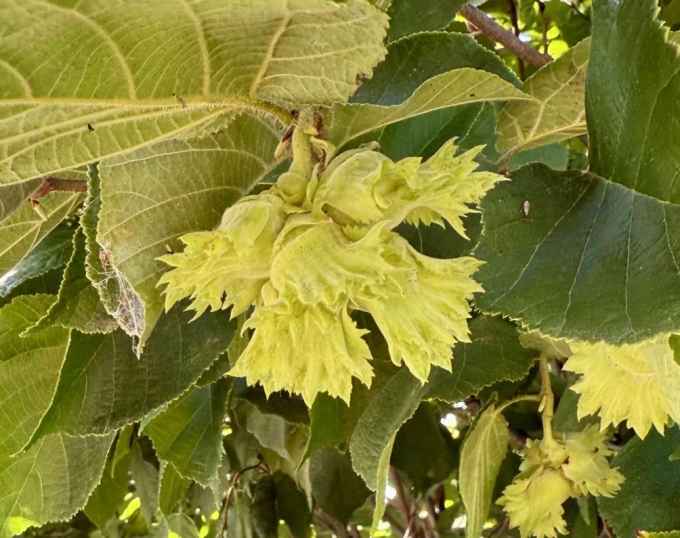Common Name: American Hazelnut
Family: Betulaceae
Plant Type: Deciduous Shrub
Hardiness Zones: 4–9
Height: 6.0 to 10.0 feet
Spread: 8.0 to 13.0 feet
Bloom Time: Early spring (March–April)
Bloom Description: Inconspicuous yellowish-brown male catkins and small red female flowers
Sun Exposure: Full sun to part shade
Water Needs: Medium
Soil Preference: Well-drained loam or sandy soil; adaptable to a range of soils
Management Level: Low
Suggested Use: Hedgerows, edible landscapes, naturalized areas, wildlife gardens
Attracts: Pollinators (especially early spring bees), birds, and wildlife
Tolerates: Clay soil, drought (once established), and urban conditions
Notable Features: Edible nuts, excellent wildlife value, suckering habit forms dense thickets
Native Range: Eastern and Central North America, including much of Nebraska
Nebraska Growing Notes:
American Hazelnut is native to Nebraska and performs well in a variety of growing conditions, especially in sunny to lightly shaded sites with good drainage. It produces edible nuts in late summer to early fall that are enjoyed by humans and wildlife alike. Useful for erosion control and as a native alternative for informal hedging or shrub borders.
Landscape Use:
Ideal for native and edible landscapes, conservation plantings, and windbreaks. Its dense, spreading habit makes it excellent for naturalized plantings and wildlife corridors. Pairs well with elderberry, serviceberry, viburnum, and native grasses.
Caution:
Tends to sucker and form colonies if not managed. Nut production can attract squirrels and other animals. Cross-pollination with another hazelnut shrub is needed for best nut yields.
Garden Locations:
Sources:
https://plants.usda.gov/plant-profile/COAM3
https://www.missouribotanicalgarden.org/PlantFinder/PlantFinderDetails.aspx?kempercode=c350



